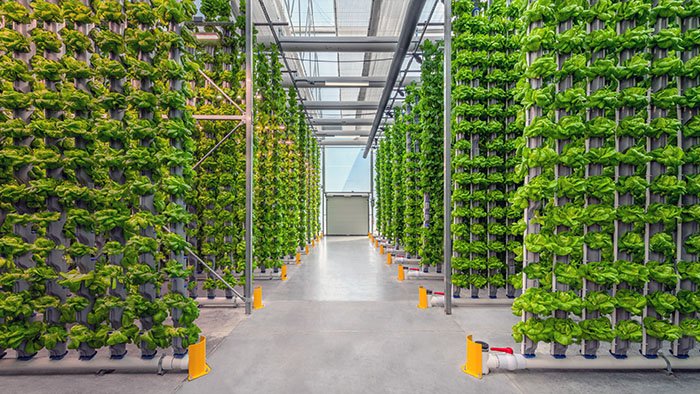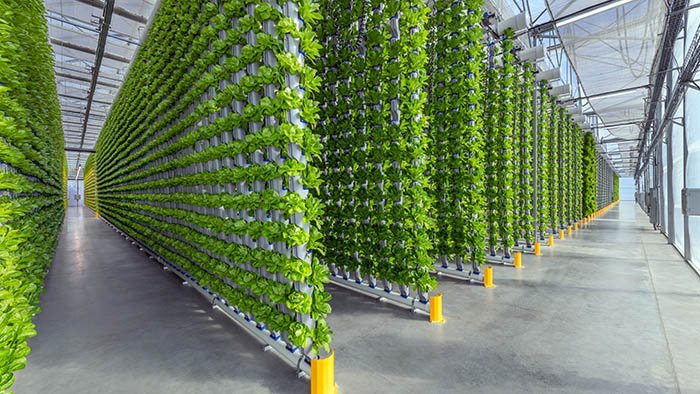The Fast Food Produce Puzzle: Challenges and Solutions
Most of us don’t pay much attention to fast food produce and the unique challenges it poses. We go through the drive-thru, grab our food, and enjoy it without ever thinking about where it comes from or how it got to us. The truth is, the lettuce and tomato on your sandwich, the veggies in your salad, or the fruit on your parfait are a serious concern for the fast food industry for several reasons.
The Sourcing Struggle
First, fresh veggies and fruits are seasonal, but fast food menus are typically not. Yes, it makes sense to put a slice of fresh tomato on every burger in the summertime, but in the dead of winter, that tomato may travel thousands of miles to reach your hometown.
Fast food thrives on the idea of mass production. Burger buns, for instance, are baked in bulk, packaged into trays, loaded onto trucks, and shipped to stores across the region. Since every bun in the batch is exactly the same, this works well. Not so with fresh fruits and veggies.
No matter how hard they may try, farmers can’t ensure every tomato, head of lettuce, or onion will be exactly the same. Not only that, delicate fruits and vegetables can be bruised and damaged in the shipping process if they’re not handled extremely carefully.
Multi-Source Ordering
Let’s think about ordering a cheeseburger from your favorite fast-food place. There’s the bun, meat, possibly cheese, lettuce, tomato, pickle, onion, and condiments. And then there’s the box it comes in, napkins, side items like fries, beverages, cups, a bag for to-go or a tray liner for dine-in, etc. Pretty standard stuff, right? Not where sourcing is concerned.
The beef (or chicken or meat substitute) probably comes from one supplier, the bun from another, and the cheese from yet a third. Then there are the veggies which may all come from the same produce source or may not. The same goes for paper goods and utensils. At the end of the day, most restaurants are dealing with at least half a dozen suppliers, probably more. It’s a logistical nightmare that fast-food companies must navigate to ensure they can deliver fresh, safe products.
Unexpected Recalls
With so many suppliers, it’s nearly impossible to keep up with the behind-the-scenes practices of each one. So if the lettuce supplier has a contamination problem, who will know until customers start getting sick? And once the problem is discovered, where is a massive multinational company supposed to find an alternate supplier that can ramp up fast enough to meet their needs?
When a recall occurs, there are extensive financial implications for these businesses. Not only do they have to scramble to find alternate sources, but there are also impacts on brand reputation and consumer trust. We’ve all seen the consumer response when a fast-food chain is involved in a recall. It’s common for all but the most loyal consumers to avoid the brand for a while. This can mean a serious dip in company revenue in the aftermath of a costly recall process.
In-House Processing Woes
Of course, not all of the difficulties surrounding fresh foods occur at the supplier side. In-house processing can be equally troublesome. Fast food workers must be correctly trained on proper food handling procedures. When dealing with fresh foods, cleaning and storage processes must be carefully adhered to or contamination is bound to occur.
Quality and Safety Concerns
There’s a reason that many fast food chains heavily rely on ultra-processed ingredients as much as possible. These foods are engineered to minimize the possibility of contamination and food-borne illness. However, not all ingredients can be processed this way.
Labor and Time Constraints
Fast food restaurants must handle fresh ingredients like tomato and onion slices, lettuce leaves, and the like. These ingredients are frequently handled by young workers who may not have the proper training or may not pay the proper attention to keep contamination at bay.
In addition to a young, potentially irresponsible workforce, fast food must work against the time constraints imposed by their business model. Nobody wants to sit in the drive-thru and wait as workers freshly slice vegetables and cook meats. Instead, most ingredients must be prepped ahead of time, and then kept ready for an order.
These challenges combine to form a perfect storm in some instances. Unclean food handling surfaces, foods stored at the wrong temperatures, and improper hand-washing habits can all lead to contamination.
Eden Green’s Vertical Farming: A Sustainable Revolution
On the other hand, there’s a fast, fresh food revolution growing in the Texas heat. Imagine row upon row of fresh, healthy greens, growing on towers that reach high into the air. Now picture these towers contained within massive greenhouses, protected against contamination in laboratory-like conditions. This is exactly the solution that Eden Green Technology has developed.
Our revolutionary vertical farms are built around hydroponic systems and designed to further Eden Green’s sustainability mission. They use 98% less water than traditional outdoor farms and 90% less light energy than other vertical farms.
Pioneering Vertical Farming
Eden Green’s technology offers the ability to grow fresh hydroponic produce regardless of climate, season, or even weather conditions. We grow fresh, healthy foods in CEA (controlled environment agriculture) conditions. CEA means we carefully monitor and adjust light, heat, humidity, and other factors to ensure the tastiest, healthiest foods possible.
Consistent Quality and Supply
Consistency is among the many benefits of hydroponics and CEA farming. Because every condition surrounding crops is carefully monitored and controlled, there are no crops lost to weather, drought, pests, and other destructive forces. Instead, crops grow large and healthy, reaching their peak faster than typical crops. Then our private label produce and custom packaging experts prepare products for your exact needs.
The Ripple Effect of Choosing Eden Green
When you choose Eden Green’s hydroponic produce for your fast food supply needs, the impacts go beyond what you’ll notice immediately.
Economic Impacts
Analysis of cost savings and economic efficiency.
Environmental Impacts
The environmental impact of traditional agriculture is well-documented and has been detrimental to our planet for far too long. While outdoor farmers are making strides toward a greener planet, further strides are needed.
When you look at hydroponics vs. traditional farming, it’s clear that Eden Green’s model addresses many of the common pitfalls in traditional farming. We use 99% less land and 98% less water than traditional soil-based farming. Not only that, our produce travels 85% fewer food miles than average fresh fruits and vegetables.
Social Benefits
It’s no secret that farm workers are severely mistreated in many parts of the world. When you purchase fresh produce from these places, you’re funding this mistreatment. By contrast, Eden Green Technology offers its employees regular, full-time employment in our safe, clean greenhouses. They receive full employee benefits and are employed in an industry that is both innovative and growing.
The Future Is Green
Eden Green is transforming how the fast food industry sources fresh ingredients. We offer fresh, local produce that is practically recall-proof and available year-round. Our harvests are predictable, offering exactly what you need when you need it. And our food is always fresh and delicious. If you’re a head produce buyer, contact Eden Green to discuss a partnership today.




